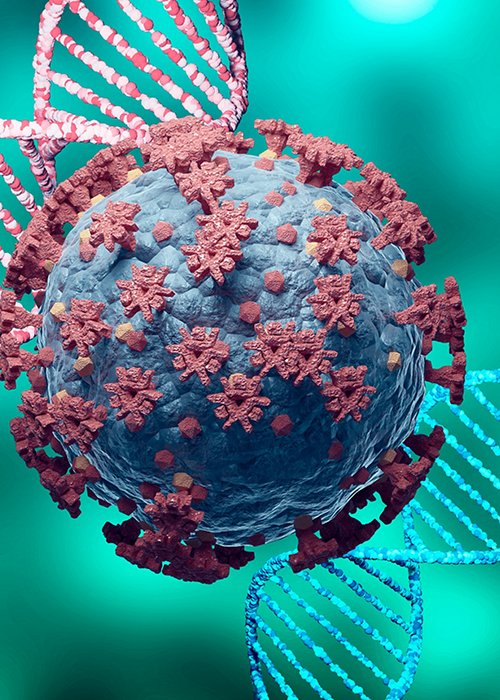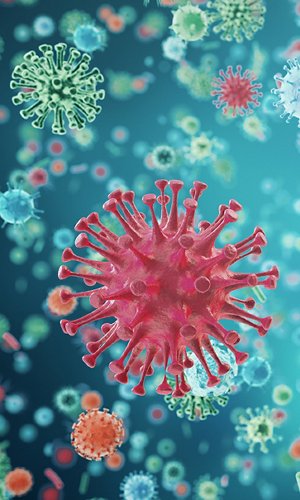Virus is a Latin word meaning poison. Viruses are pathogens (they make you ill) but they do not feed, breathe, move or reproduce independently. So then, what kind of life is it? None, viruses are not technically alive. In order to exist they must necessarily enter other organisms, which is why viruses are unrivalled parasites. There are no living beings immune to virus attack, not even bacteria.
A virus is a short strand of genetic material (DNA or RNA) enclosed in a coat of proteins called capsid, the form of which varies from one type of virus to another. The measles virus capsid has a spherical shape, that of influenza(adenovirus) is a twenty-sided solid (icosahedron), that of polio and the coronavirus looks like hairy spheres, and viruses that infect bacteria (bacteriophages) are shaped like spaceships with little legs for landing. Different structures but all tiny: the largest virus has a diameter of 300 nanometers, so a row of 3,000 of these ‘giants’ would be 1 millimetre long. The smallest one measures just 20 nanometres, to make a millimetre you would have to put 50,000 of them one after the other.
Coronaviruses are a family of viruses that attack the respiratory system. They are spherical with the surface covered with spikes with crown-shaped tips, hence their name. Some are not very dangerous and can cause a simple cold, others cause more severe illnesses. Coronaviruses affect many animal species, those that infect humans are, for the moment, seven.



